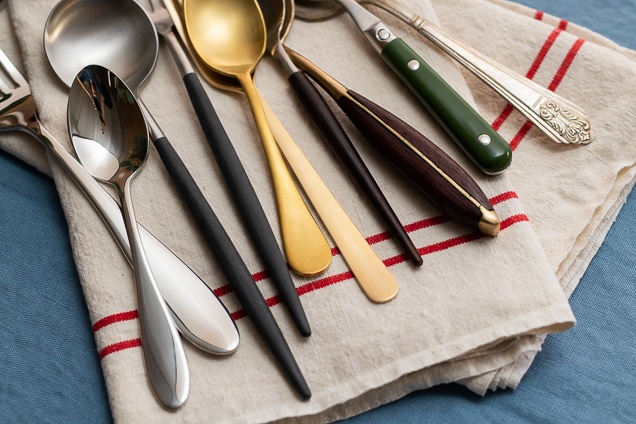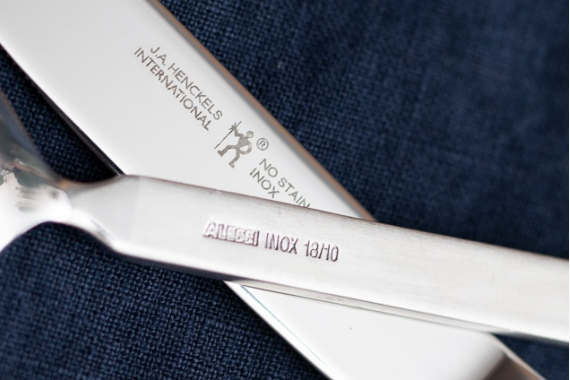
A selection of flatware made with various materials (from left to right): stainless steel, resin, PVD coating, wood, plastic, and silver plating.
Having a basic understanding of what to look for before you start shopping will make it easier to find a set of flatware you’ll love. For starters, to ensure you know what you’re buying, it’s helpful to be familiar with the materials used in flatware. Utensils can be made from a variety of alloys (combinations of metals) and can have additional coatings or other components, such as wood or resin handles. However, not all materials are equally durable. We recommend getting stainless steel flatware for everyday use because it’s affordable, easy to care for, and long-lasting. Sterling silver flatware is an elegant choice for formal occasions, but it’s very expensive and requires more maintenance.
Stainless steel flatware
Stainless steel is an alloy (meaning it consists of multiple metals) and is available in various grades, or compositional ranges. The most common grades of stainless steel used in flatware are 18/10, 18/8, and 18/0. Those numbers indicate the percentage of chromium and nickel in each type of stainless steel. Both metals add to the strength of the steel, but nickel improves the corrosion resistance and luster of the alloy. We recommend getting only 18/10 or 18/8 stainless steel flatware, which has a higher nickel content. Avoid purchasing flatware made of 18/0 stainless steel, since it doesn’t contain nickel and therefore isn’t as resistant to corrosion—meaning it will show surface scratching more. If a manufacturer doesn’t indicate the type of steel used in a particular set of flatware, that’s usually a red flag.
Occasionally you may see some European-made flatware labeled “inox,” short for the French word inoxydable (meaning “inoxidizable”), which is an umbrella term for stainless steel. According to Scott Misture, PhD, a professor at the Inamori School of Engineering at Alfred University, although the chromium content of inox steel can be as much as 18 percent, it can also go as low as 10.5 percent or 12 percent, depending on the manufacturer. We recommend buying inox utensils only if they also denote the steel grade as being 18/10.

Some European-made flatware may be labeled “inox,” which is a general term for stainless steel.
--Rita Chen,2020.03.26